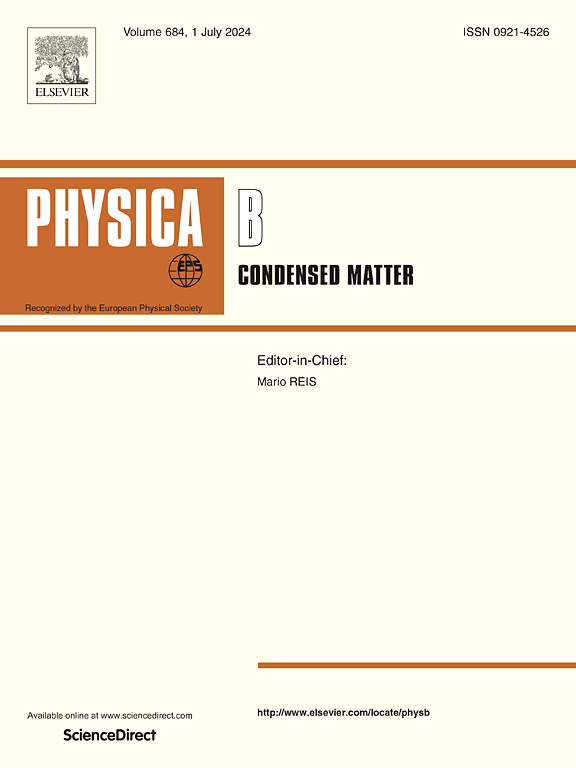Quasi-particle band structure and optical absorption in MoS2: Impact of spin–orbit coupling and vdW corrections for photodetection application
IF 2.8
3区 物理与天体物理
Q2 PHYSICS, CONDENSED MATTER
引用次数: 0
Abstract
This work showcases the influence of single-shot GW correction and spin–orbit coupling (SOC) in accurately determining the quasi-particle (QP) band gap and absorption spectra for bulk and monolayer hexagonal MoS. The computation reveals a QP band gap of bulk 1.34 eV and 2.18 eV for monolayer MoS, respectively. The results were consistent with the experimental findings. The many-body perturbation theory (MBPT) framework was used to investigate electronic and optical properties. The optical properties were investigated using the many-body perturbation theory (MBPT) framework. The findings show consistency between the optical and electronic band gap. Furthermore, it was found that the incorporation of rVV10 nonlocal correlation functional and the range-separated hybrid van der Waals density functional, known as vdW-DF2, improves the structural parameters of the materials with good agreement to experimental measurement. It is also noted that the strong hybridization of s-d orbitals near the Fermi level significantly influences the electronic properties of the MoS. This paper explores the physical properties of MoS, highlighting its potential as a material with a narrow band gap, strong light absorption, and extensive wavelength coverage. The findings demonstrated the suitability of the optimized MoS for next-generation sustainability technologies and highlighted its promise for photodetection applications.

求助全文
约1分钟内获得全文
求助全文
来源期刊

Physica B-condensed Matter
物理-物理:凝聚态物理
CiteScore
4.90
自引率
7.10%
发文量
703
审稿时长
44 days
期刊介绍:
Physica B: Condensed Matter comprises all condensed matter and material physics that involve theoretical, computational and experimental work.
Papers should contain further developments and a proper discussion on the physics of experimental or theoretical results in one of the following areas:
-Magnetism
-Materials physics
-Nanostructures and nanomaterials
-Optics and optical materials
-Quantum materials
-Semiconductors
-Strongly correlated systems
-Superconductivity
-Surfaces and interfaces
 求助内容:
求助内容: 应助结果提醒方式:
应助结果提醒方式:


